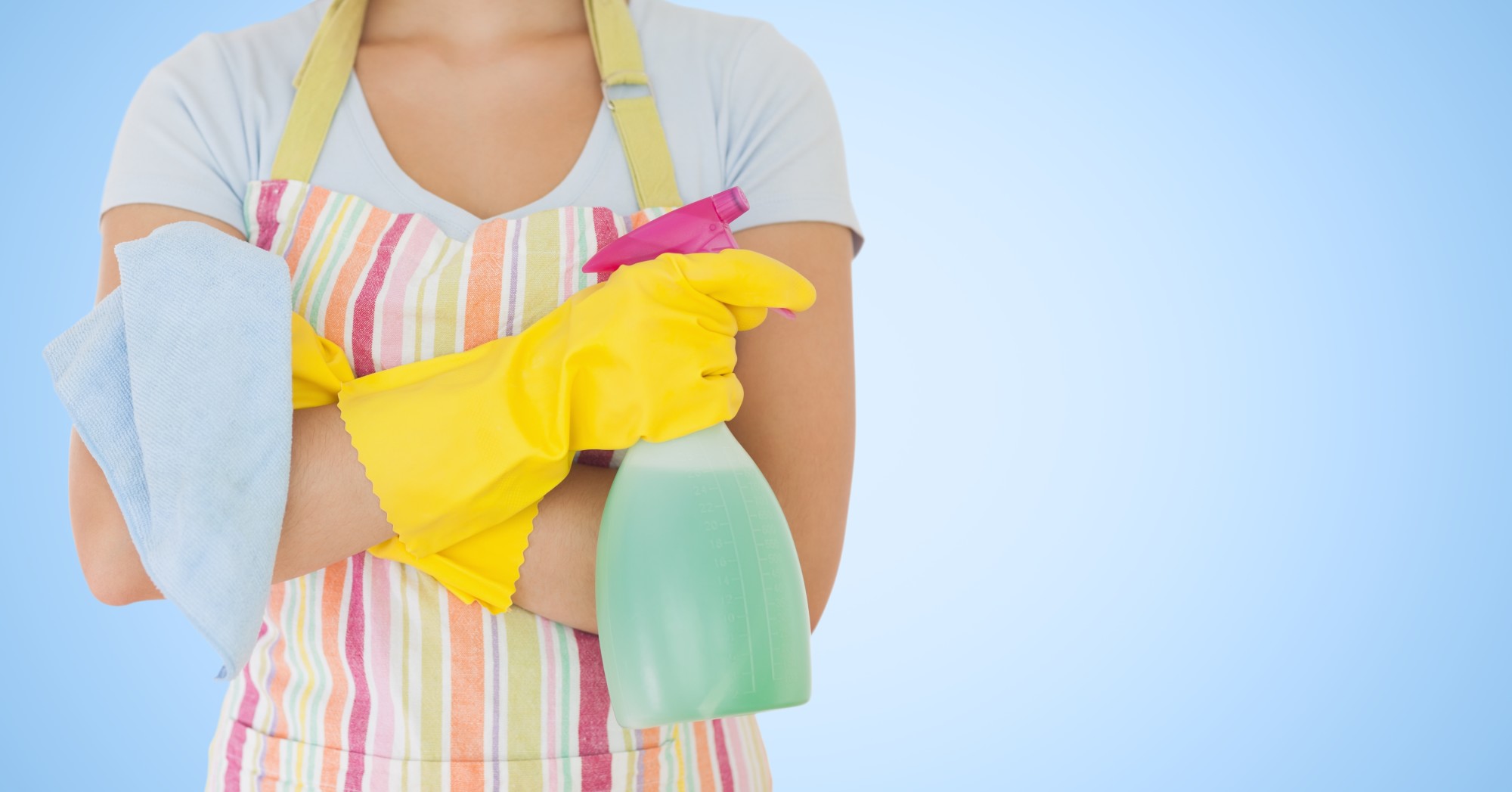Step-by-Step Everyday Cleaning Guide: How to Scrub the Surfaces, Vacuum Carpets, and Clear Out Any Clutter Efficiently
Step-by-Step Everyday Cleaning Guide: How to Scrub the Surfaces, Vacuum Carpets, and Clear Out Any Clutter Efficiently
Blog Article
Comprehending the Need for Extensively Sanitizing and Sterilizing Frequently Touched Surfaces in High-Traffic Locations
In the realm of public wellness and safety, the precise disinfection and sanitization of frequently touched surface areas in high-traffic locations stand as paramount steps in avoiding the spread of harmful pathogens. The importance of this method extends far past plain tidiness, delving into the world of condition prevention and neighborhood well-being. By exploring the different elements of surface area sanitation, from the dangers connected with neglecting cleansing protocols to the reliable methods that can be employed, a clearer understanding emerges of the crucial duty these techniques play in protecting public health and wellness. As we browse this conversation, it ends up being obvious that the effects of extensive surface area sanitation resound not only within the boundaries of a certain environment but also reverberate on a more comprehensive scale, impacting the health and wellness of individuals throughout diverse public settings.
Relevance of Surface Area Disinfection
Highlighting the comprehensive sanitation of high-traffic surface areas is essential in maintaining a sanitary environment and preventing the spread of unsafe microorganisms. High-touch surfaces such as door manages, light buttons, elevator buttons, and countertops work as breeding grounds for infections and bacteria. Normal sanitation of these surfaces is imperative to lower the risk of contamination and transmission of health problems.
By applying a robust disinfection method, services and organizations can develop a safer atmosphere for staff members, visitors, and consumers. Correct surface sanitation not only minimizes the spread of transmittable conditions yet additionally infuses confidence in the sanitation and safety of the premises. This aggressive approach shows a commitment to health and wellness and health, which is particularly vital in high-traffic areas where the chance of exposure to pathogens is enhanced.
In addition, surface area disinfection plays an important duty in overall infection control approaches. Incorporated with hand hygiene techniques, wearing masks, and keeping physical distancing, detailed disinfection of high-touch surface areas forms a detailed defense against the transmission of unsafe bacteria. Focusing on surface disinfection is an essential component of an all natural method to health and wellness and safety in common areas.
Dangers of Neglecting Cleaning Practices
Ignoring thorough disinfection of high-traffic surfaces considerably enhances the threat of microbial and viral contamination, posturing a serious hazard to the health and wellness of individuals frequenting these areas. Failing to implement correct cleansing methods can lead to the build-up and spread of hazardous pathogens, including infections and germs, on frequently touched surfaces such as doorknobs, hand rails, elevator buttons, and countertops.

Additionally, disregarding the importance of comprehensive cleaning not only jeopardizes the well-being of individuals however likewise threatens efforts to maintain a tidy and hygienic environment. It is essential to identify the significance of appropriate sanitation methods in avoiding the spread of infections and safeguarding public health.
Effective Disinfection Approaches
To maintain optimum sanitation and decrease the danger of contamination on high-traffic surface areas, using effective sanitation techniques is necessary. One of the most effective and usual sanitation approaches is utilizing chemical disinfectants.
Another efficient method is the use of UV-C light. UV-C light has been revealed to be efficient in eliminating a broad array of microbes by interrupting their DNA structure, thus preventing them from replicating. It is crucial to use UV-C light appropriately, ensuring that the correct intensity and exposure time are used to accomplish the wanted sanitation outcomes.
In addition, employing heavy steam cleansing as a sanitation method can be very look at here now reliable, especially on surface areas that are heat-resistant. Vapor can permeate porous surfaces and kill microorganisms, viruses, and various other virus properly. When utilizing steam cleansing, it is necessary to make sure that the surface gets to the needed temperature level for an enough quantity of time to guarantee proper sanitation.
Effect On Public Health
The upkeep of high criteria of tidiness and sanitation on high-traffic surfaces plays a critical function in guarding public health. Regularly touched surfaces in locations with high tramp, such as doorknobs, hand rails, elevator switches, and restroom facilities, offer as reproducing grounds for unsafe virus.
In high-traffic areas like flight terminals, colleges, hospitals, and public transportation systems, the influence of rigorous sanitation steps can not be downplayed. Focusing on the sanitization of often touched surface areas is a positive read here approach to promoting public wellness and improving the security of people in shared spaces.
Carrying Out Regular Cleaning Methods
Promptly setting up and sticking to a constant routine of cleaning procedures is vital for keeping the sanitation and safety of high-traffic surfaces. Normal cleaning methods are crucial in avoiding the buildup of bacteria and microorganisms on often touched surface areas, specifically in areas with high foot web traffic. By executing a methodical approach to cleansing, companies can efficiently reduce the danger of illness transmission and produce a much healthier environment for workers, clients, and the public.
To establish an effective cleansing timetable, it is important to determine high-traffic areas that call for frequent interest. These areas might include doorknobs, handrails, lift switches, restroom centers, and common equipment. Implementing a routine cleaning routine that targets these surface areas several times a day can significantly lower the spread of unsafe bacteria and viruses.
Furthermore, utilizing proper cleaner and disinfectants is key to making certain that surfaces are thoroughly sterilized. Routine training of cleaning up personnel on proper cleansing strategies and the importance of adherence to the cleaning schedule is additionally crucial in see this site preserving a sanitary environment. By focusing on constant cleansing procedures, organizations can advertise the health and health of people who connect with these high-traffic surface areas.

Final Thought
In final thought, it is essential to prioritize thorough sanitation and sanitization of regularly touched surface areas in high-traffic areas to avoid the spread of dangerous pathogens and keep public health and wellness. Neglecting proper cleansing methods can boost the danger of contamination and transmission of diseases. By implementing normal cleansing protocols and utilizing reliable disinfection methods, we can create a safer atmosphere for every person (Clear Out Any Clutter). It is vital to identify the relevance of keeping clean surfaces in high-traffic areas to guarantee the well-being of the area.
In the realm of public health and wellness and safety, the careful disinfection and sanitization of frequently touched surfaces in high-traffic locations stand as vital measures in avoiding the spread of dangerous virus. By checking out the different aspects of surface disinfection, from the dangers associated with overlooking cleaning methods to the efficient techniques that can be used, a more clear understanding arises of the crucial function these methods play in protecting public wellness.Furthermore, employing steam cleaning as a sanitation approach can be extremely reliable, especially on surfaces that are heat-resistant. When using vapor cleaning, it is vital to guarantee that the surface area gets to the needed temperature level for an enough amount of time to assure proper sanitation.
In verdict, it is important to focus on complete disinfection and sanitization of often touched surface areas in high-traffic areas to prevent the spread of harmful microorganisms and keep public health.
Report this page